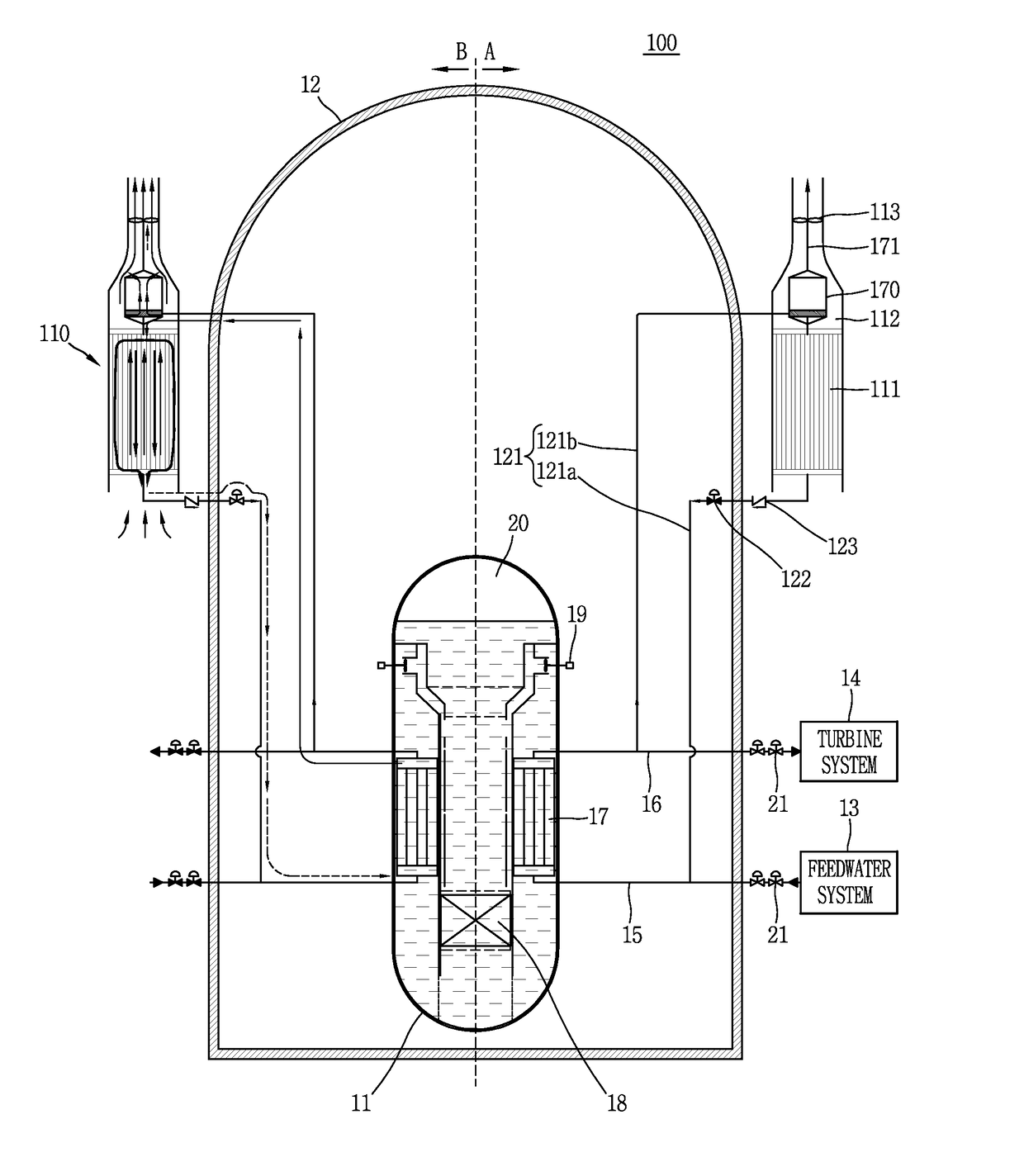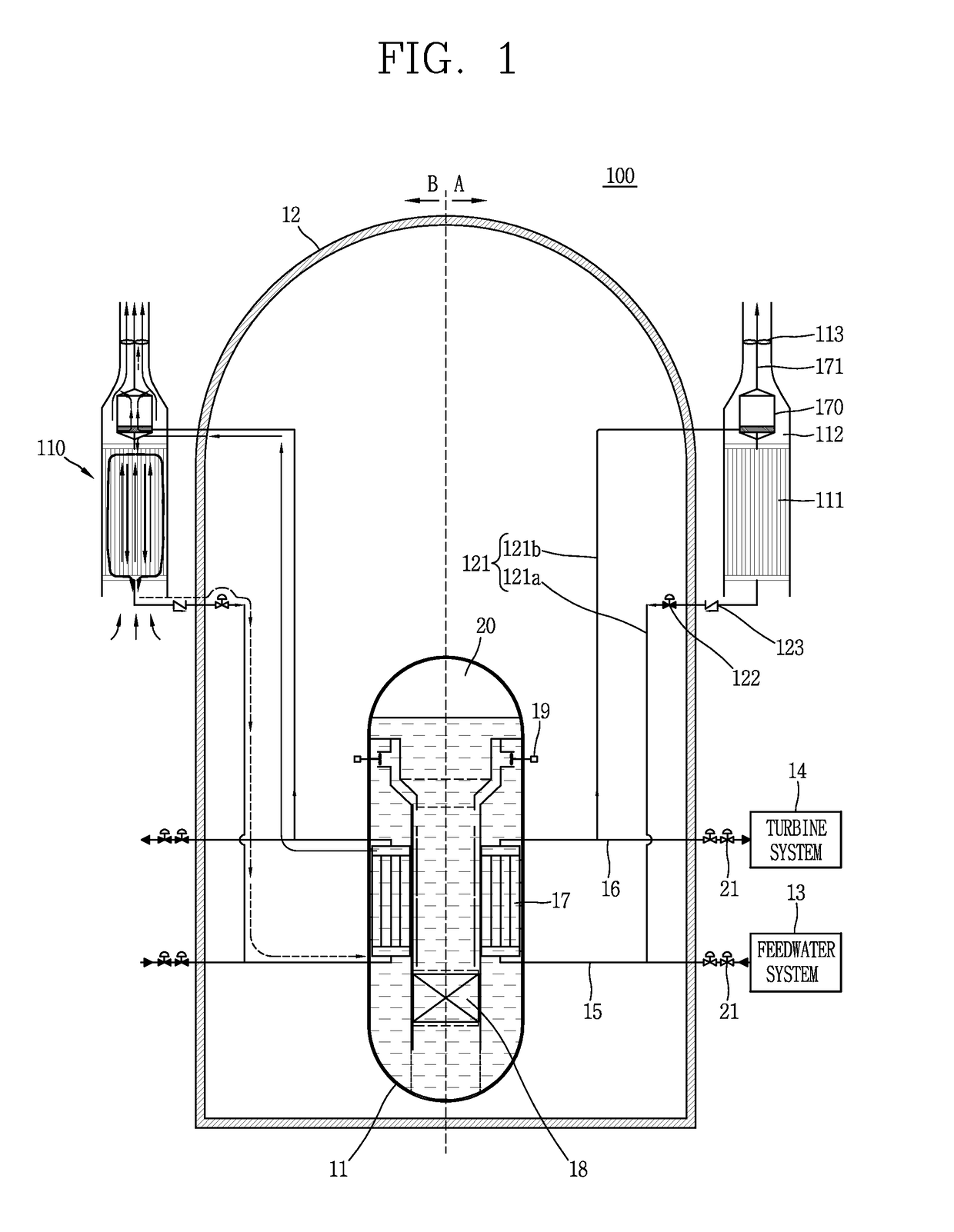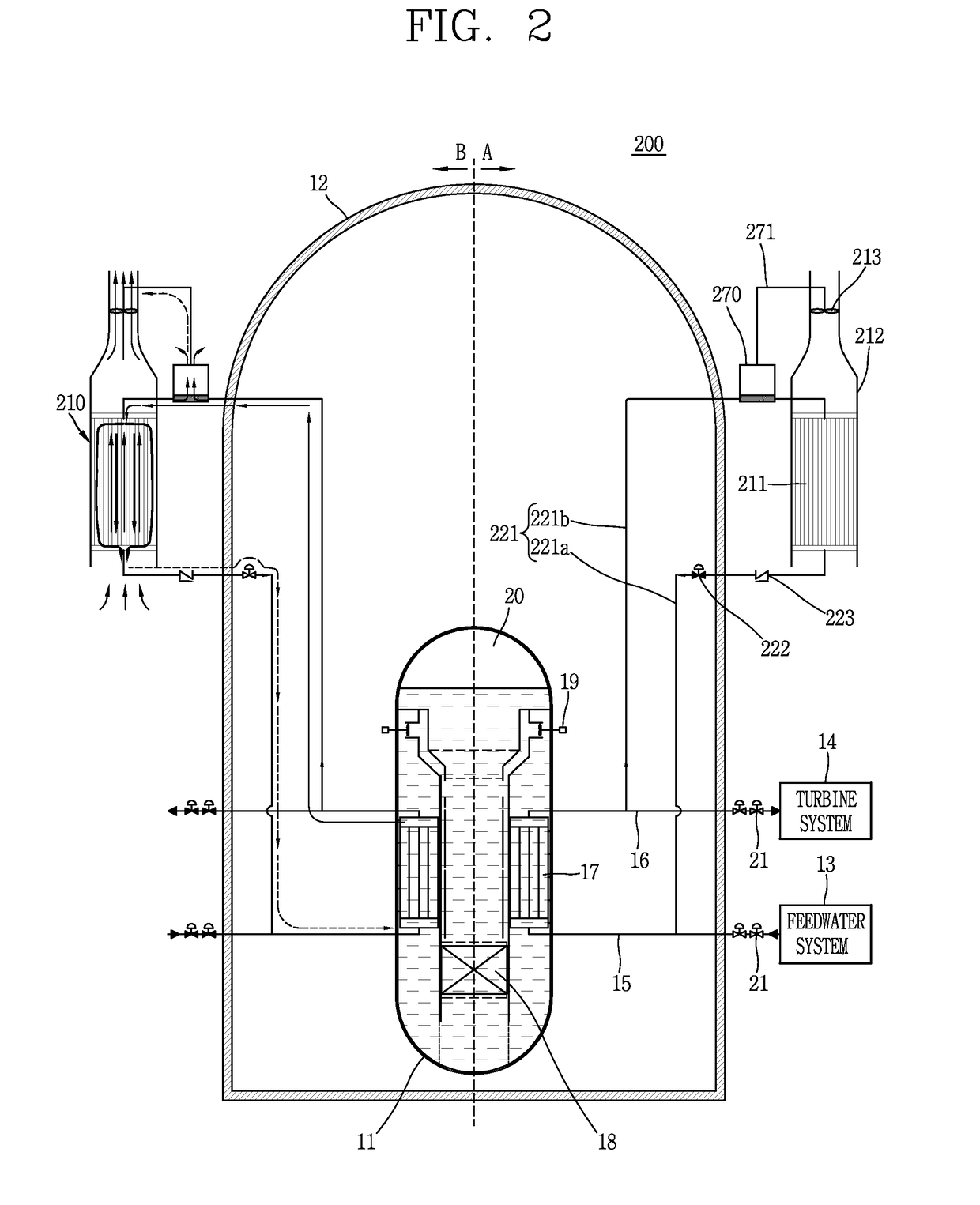Nuclear power plant
a nuclear power plant and nuclear technology, applied in nuclear reactors, nuclear elements, greenhouse gas reduction, etc., can solve the problems of large amount of radioactive materials (fission products), waste heat recycling efforts, and damage to barriers blocking radioactive materials from an outside, so as to improve the efficiency and performance of heat exchangers, enhance economic efficiency, and enhance the reliability of safety systems
- Summary
- Abstract
- Description
- Claims
- Application Information
AI Technical Summary
Benefits of technology
Problems solved by technology
Method used
Image
Examples
first embodiment
[0180]FIG. 1 is a conceptual view illustrating a passive residual heat removal system 110 to which a Stirling engine 170 according to a first embodiment of the present disclosure is applied, and a nuclear power plant 100 having the same.
[0181]Although the nuclear power plant 100 illustrated in FIG. 1 is illustrated for an integral type nuclear reactor, the present disclosure may not be necessarily limited to an integral nuclear reactor, and may also be applicable to a separate type nuclear reactor. Furthermore, the present disclosure may not be necessarily limited to a pressurized water reactor, and may also be applicable to various types of nuclear power plants including gas furnaces, liquid metal furnaces or the like.
[0182]According to the first embodiment of FIG. 1, for the sake of convenience of explanation, the passive residual heat removal system 110 and the nuclear power plant 100 having the same are illustrated symmetrically with respect to a reactor coolant system 11. A nor...
second embodiment
[0246]FIG. 2 is a conceptual view illustrating a passive residual heat removal system 210 to which a Stirling engine 270 associated with a second embodiment of the present disclosure is applied, and a nuclear power plant 200 having the same.
[0247]The Stirling engine 270 according to the second embodiment is provided at an outside of the containment 12 and an outside of a heat exchange casing 212. Other configurations are the same as or similar to those of the first embodiment described above, and thus the description thereof will be omitted for clarity of explanation.
[0248]However, when the Stirling engine 270 is exposed to an external environment of the heat exchange casing 212, it is easy for an operator's access, thereby having an advantage of facilitating maintenance.
third embodiment
[0249]FIG. 3 is a conceptual view illustrating a passive residual heat removal system 310 to which a Stirling engine 370 according to a third embodiment of the present disclosure is applied, and a nuclear power plant having the same.
[0250]The Stirling engine 370 according to the third embodiment may be provided at a first flow path inlet side of a heat exchanger 311 and a second flow path outlet side of the heat exchanger 311 through which a cooling fluid is introduced. Steam introduced into the second flow path of the heat exchanger 311 may be cooled and condensed by the external atmosphere of the containment 12 introduced into the first flow path of the heat exchanger 311 and collected at the outlet side of the second flow path, and the collected cooling water may be transferred to the steam generator 17 along a feedwater pipe 321a. The Stirling engine 370 is provided on the feedwater pipe 321a to receive heat from the cooling water flowing along the feedwater pipe 321a so as to g...
PUM
 Login to View More
Login to View More Abstract
Description
Claims
Application Information
 Login to View More
Login to View More - R&D
- Intellectual Property
- Life Sciences
- Materials
- Tech Scout
- Unparalleled Data Quality
- Higher Quality Content
- 60% Fewer Hallucinations
Browse by: Latest US Patents, China's latest patents, Technical Efficacy Thesaurus, Application Domain, Technology Topic, Popular Technical Reports.
© 2025 PatSnap. All rights reserved.Legal|Privacy policy|Modern Slavery Act Transparency Statement|Sitemap|About US| Contact US: help@patsnap.com



